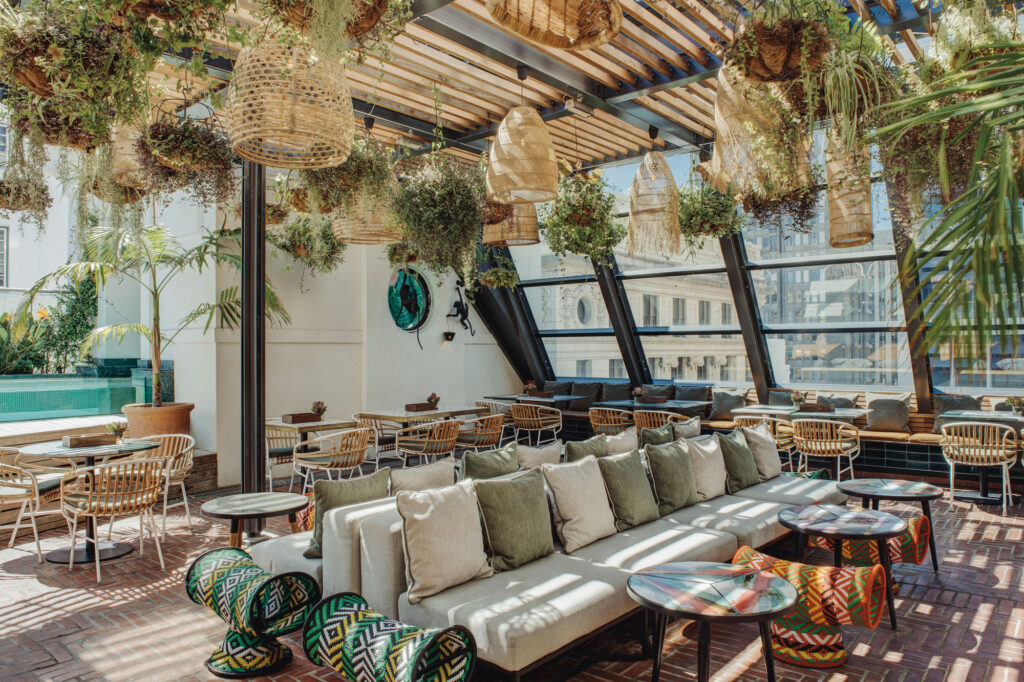
South Africa
The Rooibos Route: from bush to brew on the red-gold trail
Southern Africa • South Africa • The Rooibos Route: from bush to brew on the red-gold trail
The ultimate guide to exploring the Rooibos Route
The Rooibos Route is one of those rare travel experiences that ties together landscape, culture and history in a single thread. Stretching through the Cederberg and Clanwilliam region of South Africa, it celebrates the only place on earth where rooibos naturally grows. If you’ve ever sipped a cup of rooibos tea and wondered where it all begins, the Cederberg is where the story comes alive. Out here, surrounded by rugged sandstone peaks and fynbos valleys, this plant has been growing wild for centuries. The Rooibos Route is a scenic drive that offers you a chance to trace rooibos back to its roots, meet the people who’ve turned it into a way of life and taste it in its purest form.
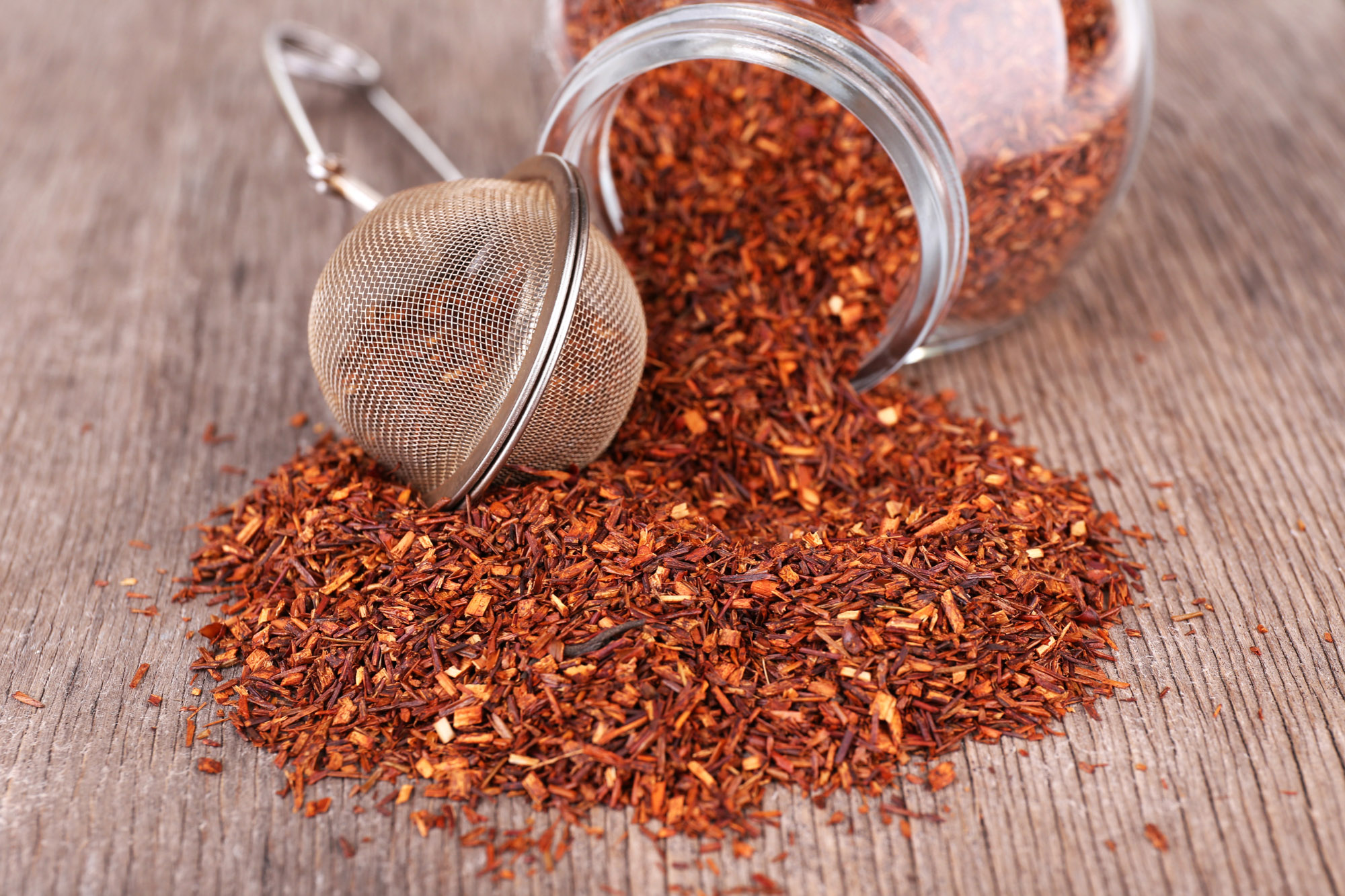
What exactly is rooibos and why is it called the red-gold of South Africa?
What is rooibos?
Rooibos, scientifically known as Aspalathus linearis, is a shrub native exclusively to the Western Cape of South Africa. When harvested and brewed, the leaves release a deep, reddish-brown infusion, which is why it’s affectionately called the red bush tea. But beyond its distinctive colour, rooibos holds a deeper cultural and economic significance for South Africa – hence the nickname red-gold.
How does rooibos differ from traditional tea?
Unlike traditional teas derived from the Camellia sinensis plant, rooibos is naturally caffeine-free and low in tannins, making it gentler on the stomach and popular among health-conscious drinkers worldwide. The red hue comes from a unique oxidation process that turns the fresh green leaves into the familiar red colour during processing.
Historical significance
For centuries, indigenous Khoisan communities harvested wild rooibos, using it both as a refreshing beverage and for its medicinal qualities. Today, rooibos is a source of pride for South Africa – it’s one of the country’s few agricultural products protected by geographical indication, meaning only rooibos grown in this specific region can bear the name internationally.
This red-gold status reflects rooibos’s growing global demand, contributing significantly to the local economy through farming, processing and export. It’s a symbol of South African heritage, sustainability and innovation, with roots firmly planted in the rugged landscapes of the Cederberg mountains.

Where does rooibos grow and why only in this region?
The exclusive rooibos region
Rooibos thrives in a very specific corner of the world – the rugged Cederberg mountains and surrounding areas in the Western Cape of South Africa. This limited growing region is no accident. It’s the result of a unique combination of soil, climate and altitude that rooibos requires to flourish.
Soil and climate requirements
The plant grows best in sandy, acidic soils that are low in nutrients, conditions found in abundance in the Cederberg’s mountainous terrain. The area enjoys a Mediterranean climate – wet winters and hot, dry summers – which perfectly matches rooibos’s natural growth cycle. Temperatures swing between chilly winter nights and scorching summer days, encouraging the plant to develop the flavours and antioxidants that rooibos is praised for.
Ecological significance
Rooibos is part of the fynbos biome, a globally renowned biodiversity hotspot. This delicate ecosystem supports a wealth of unique flora and fauna and is protected to preserve its natural balance. The rooibos plant’s ability to fix nitrogen helps maintain soil fertility, making it a natural fit in this environment. Attempts to grow rooibos outside this region have largely failed because replicating these specific environmental factors is incredibly challenging.
Protected status
It’s not just the soil or the weather – there’s an intricate relationship between rooibos and its native ecosystem that ensures its quality and character. This exclusivity has even earned rooibos protection under South Africa’s geographical indication laws, ensuring that genuine rooibos can only come from this red-gold trail.

How did rooibos go from a wild bush to a global favourite?
Indigenous roots
Rooibos’s journey from a wild shrub in the Cederberg to a globally beloved tea is a fascinating story rooted in indigenous knowledge, entrepreneurial spirit and innovation. For centuries, the indigenous Khoisan people were the first to discover rooibos’s potential, harvesting and brewing the leaves as a refreshing, naturally sweet herbal tea. They also valued it for its medicinal properties, using it to soothe ailments like allergies and digestive issues.
Early commercialisation
European settlers in the 18th and 19th centuries became curious about rooibos, but it wasn’t until the early 1900s that rooibos started gaining commercial traction. Benjamin Ginsberg, a Lithuanian immigrant and trader based in Clanwilliam, is often credited as the pioneer who transformed rooibos into a marketable product. Ginsberg began harvesting wild rooibos and supplying it to Cape Town’s apothecaries and tea shops, bringing it to a broader audience.
Evolution of farming and processing
In the early days, rooibos harvesting was a labour-intensive, seasonal practice done mostly by hand and processing methods were rudimentary. Over time, scientific research and agricultural advances refined these techniques, introducing systematic planting, controlled harvesting and oxidation processes that improved flavour and shelf life.
Global expansion
After decades of local popularity, rooibos’s reputation began to expand internationally in the late 20th century, propelled by growing interest in caffeine-free and health-conscious beverages. Today, rooibos is exported to over 30 countries, with particularly strong markets in Europe, Japan and the United States. Its versatility – from traditional teas to ready-to-drink infusions and rooibos-infused products – continues to fuel demand.
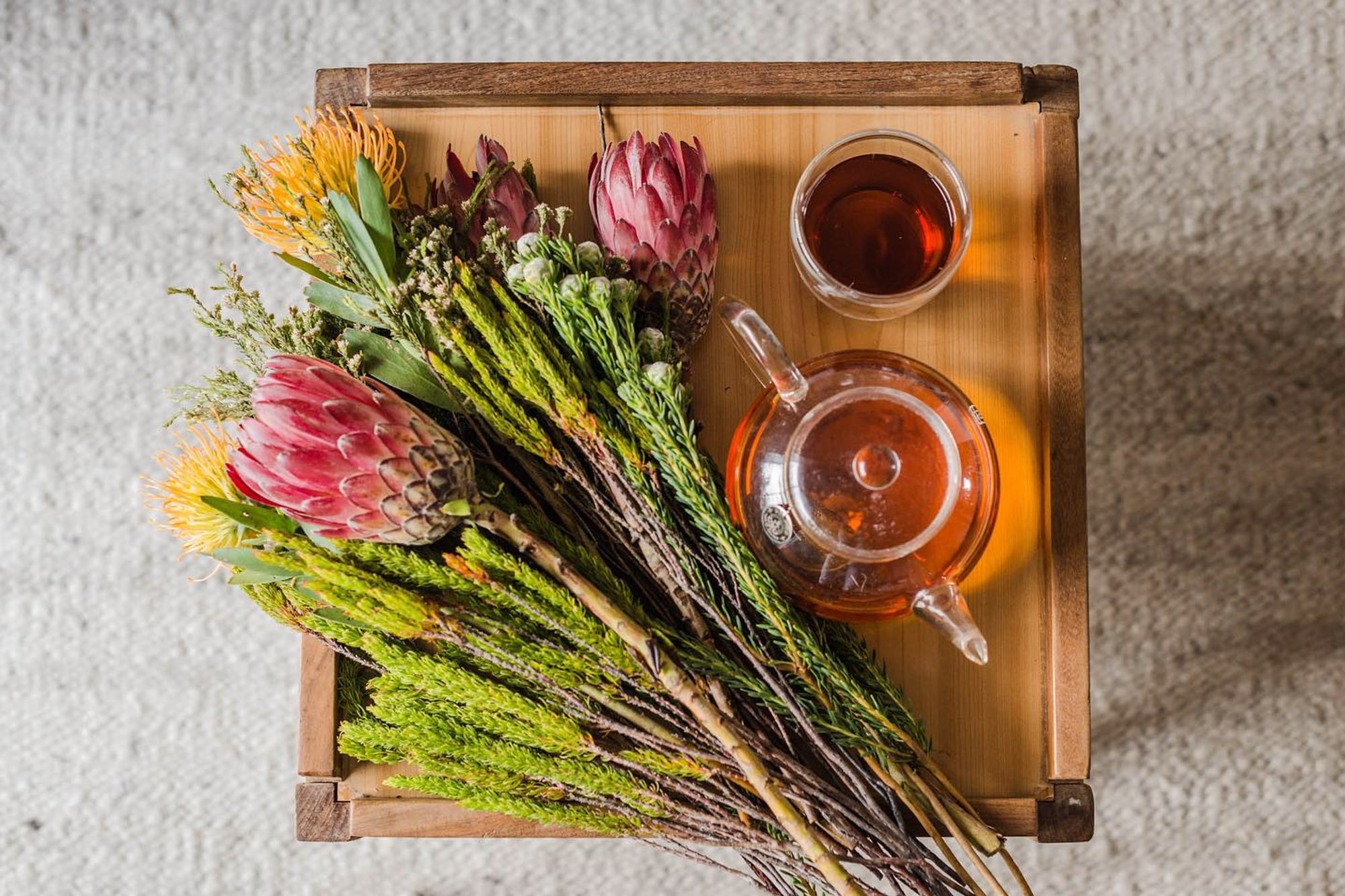
What makes rooibos farming unique compared to other crops?
Growth cycle and environment
Rooibos farming stands apart from many other agricultural practices thanks to its deep roots in both tradition and sustainability. One of the most striking features is the plant’s slow growth cycle – rooibos takes about 18 months to mature from seed to first harvest, unlike annual crops that turn around in a few months. This requires patience and careful planning from farmers.
Natural soil improvement
Unlike typical commercial crops, rooibos thrives in poor, sandy soils with very low fertility. This means farmers don’t need to rely heavily on fertilisers or pesticides, which aligns perfectly with sustainable farming principles. The rooibos plant itself is a nitrogen fixer, naturally enriching the soil and supporting the surrounding fynbos ecosystem.
Harvesting methods
Harvesting rooibos is a hands-on, labour-intensive process. Traditionally, the plants are cut back to about 15 centimetres above the ground after flowering to encourage fresh growth. This cut is done by hand or with mechanised shears, depending on the size of the farm. The leaves and stems are then collected for processing. Because rooibos bushes take time to regrow, farmers often practice rotational harvesting across plots to maintain soil health and productivity.
Community and sustainability
Community and small-scale farms play a critical role in rooibos production. Many farmers work within cooperatives, which support sustainable methods and fair trade practices, ensuring economic benefits are shared widely. This social aspect ties rooibos farming to community empowerment and cultural preservation.
Photography courtesy of Sunbird Rooibos
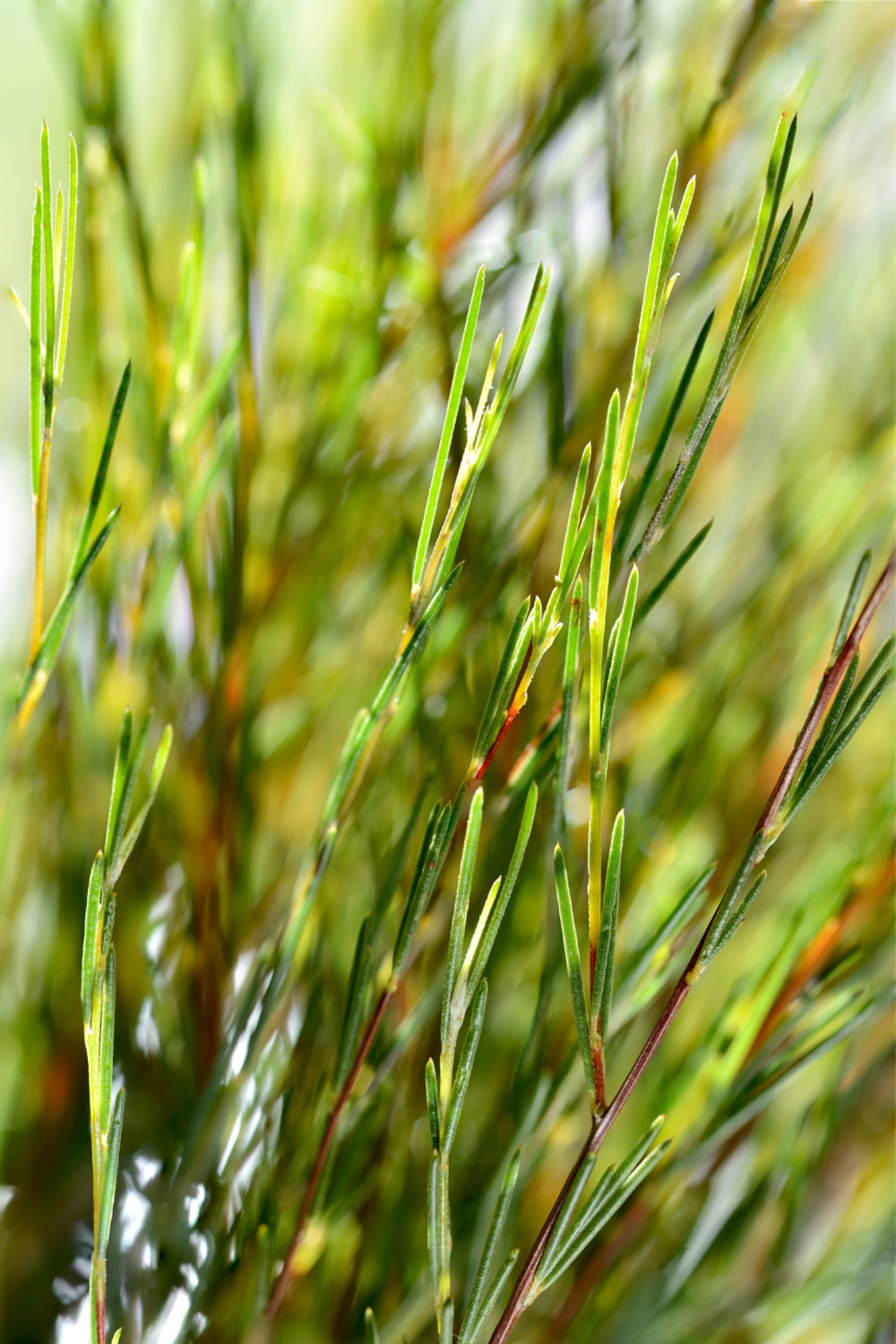
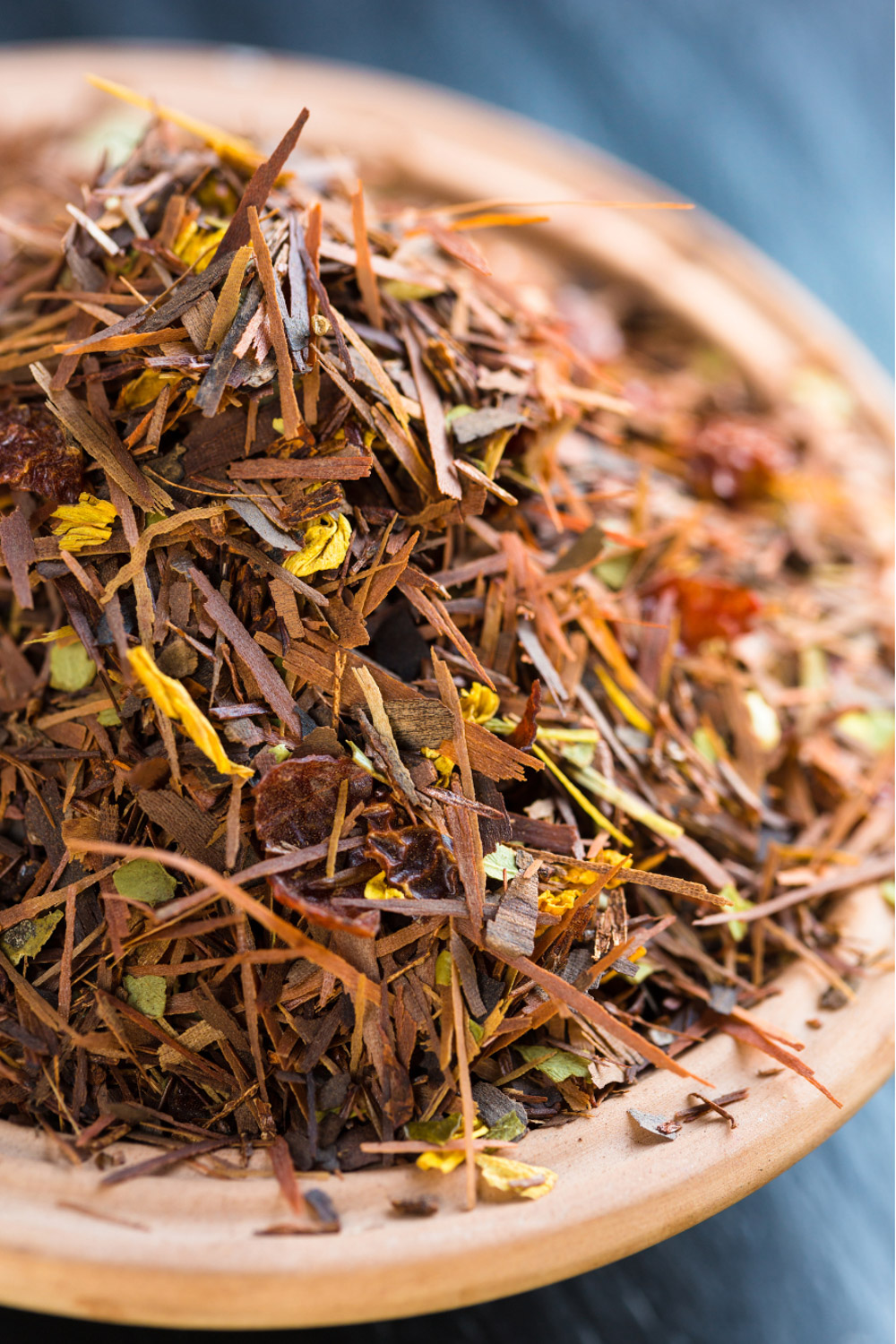
How is rooibos processed from bush to brew?
Bruising and oxidation
Turning rooibos from a bush into the comforting red brew involves a timed and skilful process that has evolved over decades. After the rooibos plants are harvested – typically by cutting the branches about 15 centimetres above the ground – the next step is to prepare the leaves for oxidation, the stage that gives rooibos its signature red colour and flavour.
First, the harvested branches are bruised or shredded to break down the leaf cells. Traditionally, this was done by hand, but modern farms use mechanical rollers to speed up the process while maintaining quality. Bruising is crucial because it triggers enzymatic oxidation, much like the fermentation process in black tea production.
Next, the bruised leaves are heaped into piles or spread out in shallow beds to undergo oxidation, which can last anywhere from 12 to 24 hours. During this time, the green leaves gradually turn a deep reddish-brown and the aroma develops its characteristic sweet, nutty notes. This oxidation process is highly sensitive – weather conditions and timing directly affect the final flavour profile.
Drying
Following oxidation, the rooibos is sun-dried for several hours or sometimes overnight to reduce moisture content and stabilise the tea for storage. Some producers now use controlled drying facilities to ensure consistency, especially in wetter seasons.
Sorting and grading
Finally, the dried rooibos is sorted and graded. Leaves are separated from stems and dust to create different tea qualities – from fine, needle-like strands to coarser blends used in herbal infusions or rooibos-based products. This grading also determines the price and suitability for export or local consumption.
Green rooibos
There’s also green rooibos, which skips the oxidation step altogether. This version retains a fresh, grassy flavour and a lighter green colour. It’s less common but gaining interest for its higher antioxidant content.

What is the Rooibos Route and where does it take visitors?
The Rooibos Route is a uniquely South African travel experience that traces the journey of rooibos tea from its native bushes to the cup. Centred around the town of Clanwilliam in the Western Cape, the route is a scenic circuit that winds through the Cederberg mountains and rooibos farming communities, offering you a blend of culture, agriculture and stunning landscapes.
What to expect on the route
This trail showcases the full rooibos story – from sprawling tea farms where you can see the bushes up close to processing plants where the magic of oxidation and drying happens. Along the route, you’ll find tasting rooms that invite you to sample fresh rooibos teas – traditional red rooibos and the rarer green rooibos – often paired with local delicacies.
Key stops include historic tea farms such as Clanwilliam Tea Estate, where guided tours explain the cultivation and harvesting processes and Rooibos Ltd., one of the largest processing facilities open to the public. The route also features smaller, family-run farms that offer intimate farm-stay accommodations and opportunities to meet the farmers behind this iconic crop.
Beyond the tea
The Rooibos Route isn’t just about tea. While en route, explore the cultural heritage of the region, including Khoisan history, fynbos biodiversity and the slow-living lifestyle that characterises this part of South Africa. Scenic drives through rugged mountain passes, visits to local craft markets and hiking trails through rooibos fields add layers of adventure and discovery to this journey.
How to travel the route
The Rooibos Route is designed to be flexible, so you can shape the journey to match your pace and curiosity. Most travellers choose to self-drive, which is straightforward thanks to good roads and clear signage pointing out the farms, tasting rooms and small towns that make up the route. Having your own car also means you can stop for impromptu photo opportunities.
If you prefer a more curated experience, guided tours are available through local operators who know the farmers, producers and cultural sites personally. They can open doors to behind-the-scenes encounters, from chatting with rooibos harvesters to visiting lesser-known spots that aren’t always marked on the map.
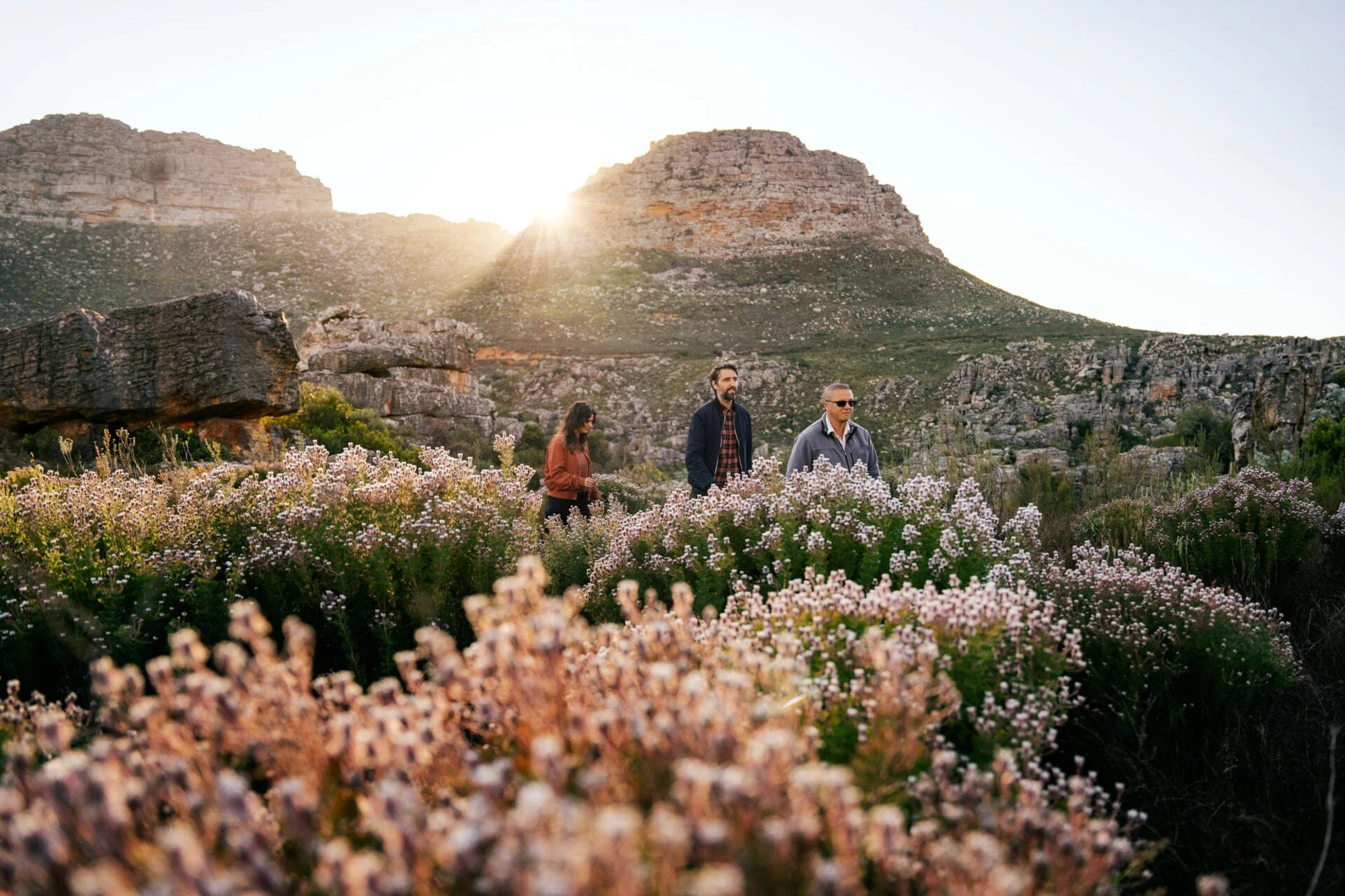
What experiences can travellers expect along the Rooibos Route?
Farm tours and tea tastings
Tea tasting is naturally central to the journey. You can sample both traditional red rooibos and green rooibos varieties, alongside locally made foods designed to complement the tea’s nutty and sweet flavours. Some farms and tasting rooms offer specialised pairing menus, featuring rooibos-infused chocolates, cheeses or even cocktails, highlighting the versatility of rooibos beyond the teacup.
Wellness offerings
If you like a bit of wellness added to your adventures, you’ll find plenty to enjoy here. Rooibos has inspired a growing number of spa treatments and health-focused products in the area. Rooibos-infused massages, facials and body scrubs tap into the plant’s antioxidant and anti-inflammatory properties, creating a local spa experience rooted in nature.
Culinary experiences
Foodies can explore rooibos-inspired cuisine served at local restaurants and farm cafés. From rooibos-braised lamb to rooibos-infused baked goods, chefs are increasingly incorporating the tea’s distinctive flavour into their dishes, offering a fresh taste of South African culinary creativity.
Outdoor activities
For outdoor adventurers, the Rooibos Route presents hiking and walking trails through the stunning Cederberg landscape, where the rugged mountains meet the red-rooibos-covered plains. These trails pass through indigenous flora and provide breathtaking views, perfect for those who appreciate the intersection of nature and culture.
Photography courtesy of Simbavati

What makes rooibos healthy? Are the claims backed by science?
Rooibos has earned a reputation as a healthful herbal tea and many of its benefits are supported by scientific research, though it’s important to balance enthusiasm with evidence. One of rooibos’s standout qualities is its high antioxidant content – particularly compounds like aspalathin and nothofagin – that help protect cells from oxidative stress and inflammation.
Because rooibos is naturally caffeine-free, it offers a gentle alternative to black or green teas, making it suitable for children, pregnant women and those sensitive to caffeine. It’s also low in tannins, which means it doesn’t interfere with iron absorption like some traditional teas can.
Studies suggest rooibos may support heart health by positively affecting blood pressure and cholesterol levels, though more extensive clinical trials are needed for conclusive evidence. Its anti-inflammatory properties have been linked to benefits for digestion and skin health, which aligns with its traditional use by indigenous peoples.
While rooibos is often marketed as a cure-all, it’s best appreciated as a nourishing, antioxidant-rich beverage that complements a balanced lifestyle.
Photography courtesy of Sunbird Rooibos
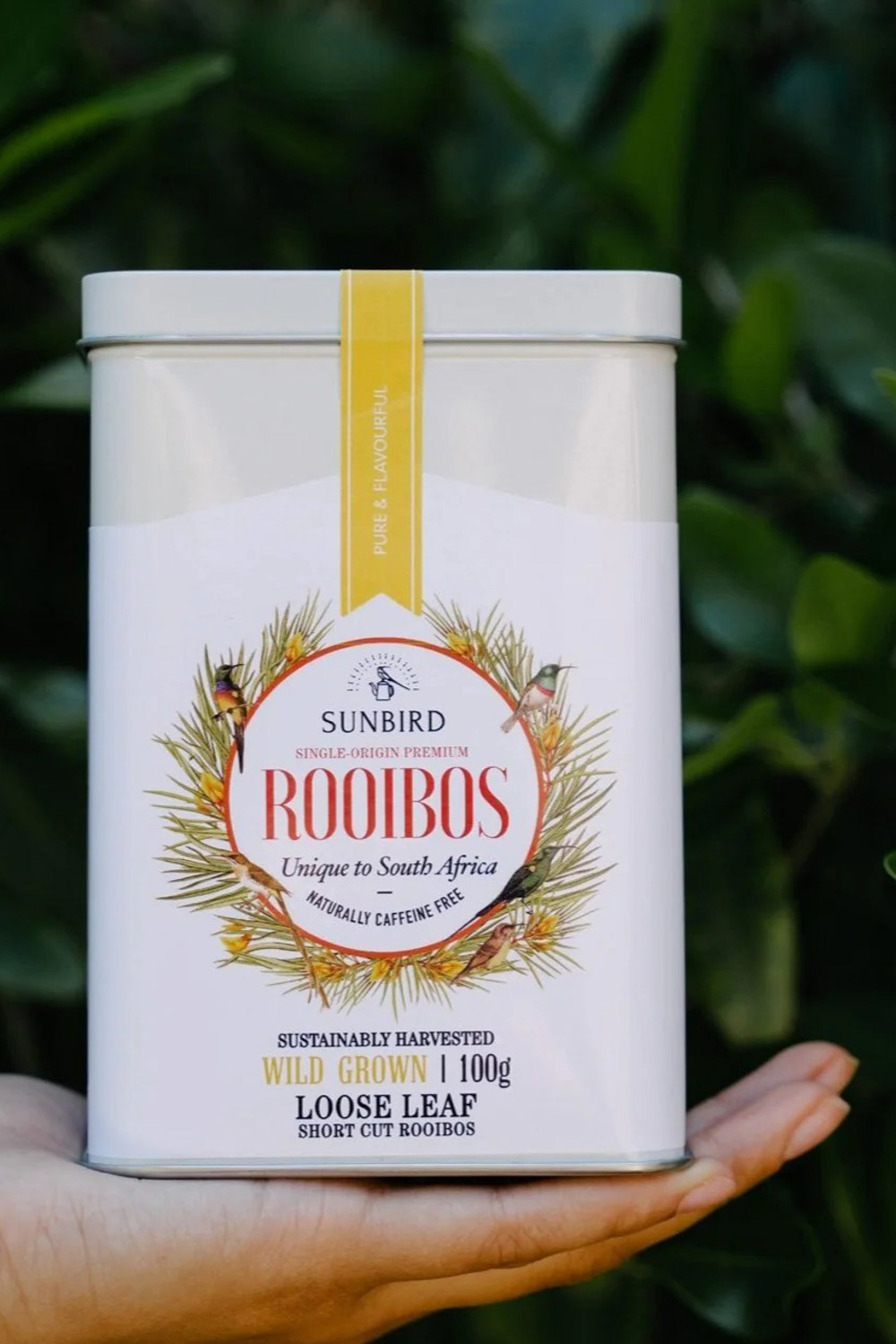

How has rooibos inspired South African design, branding and culture?
Visual identity
Rooibos’s iconic red hue and intricate heritage have inspired a new wave of South African design and cultural expression. Packaging for rooibos products ranges from artisanal, handcrafted labels that celebrate local heritage to contemporary designs aimed at global markets. This visual diversity reflects rooibos’s dual identity as both a traditional indigenous plant and a modern superfood.
Local artists and designers draw inspiration from rooibos in textiles, ceramics and home décor, often incorporating the distinctive red and earthy tones into their work. Rooibos motifs have found their way into fashion collections and craft markets, symbolising a connection to the land and sustainable living.
Culture and culinary innovation
Culinary culture has embraced rooibos as well. Chefs across the country experiment with infusing rooibos into sauces, desserts and even savoury dishes, pushing the boundaries of how this humble tea can flavour a meal. Rooibos cocktails and mocktails are gaining popularity in trendy bars, showcasing its versatility and appeal to younger generations.
Culturally, rooibos is celebrated through annual festivals and events in the Cederberg region, where locals and visitors come together to honour the plant’s significance. These gatherings blend music, storytelling, food and tea tastings, offering an immersive experience that highlights rooibos’s role in South Africa’s identity.
Photography courtesy of Sunbird Rooibos
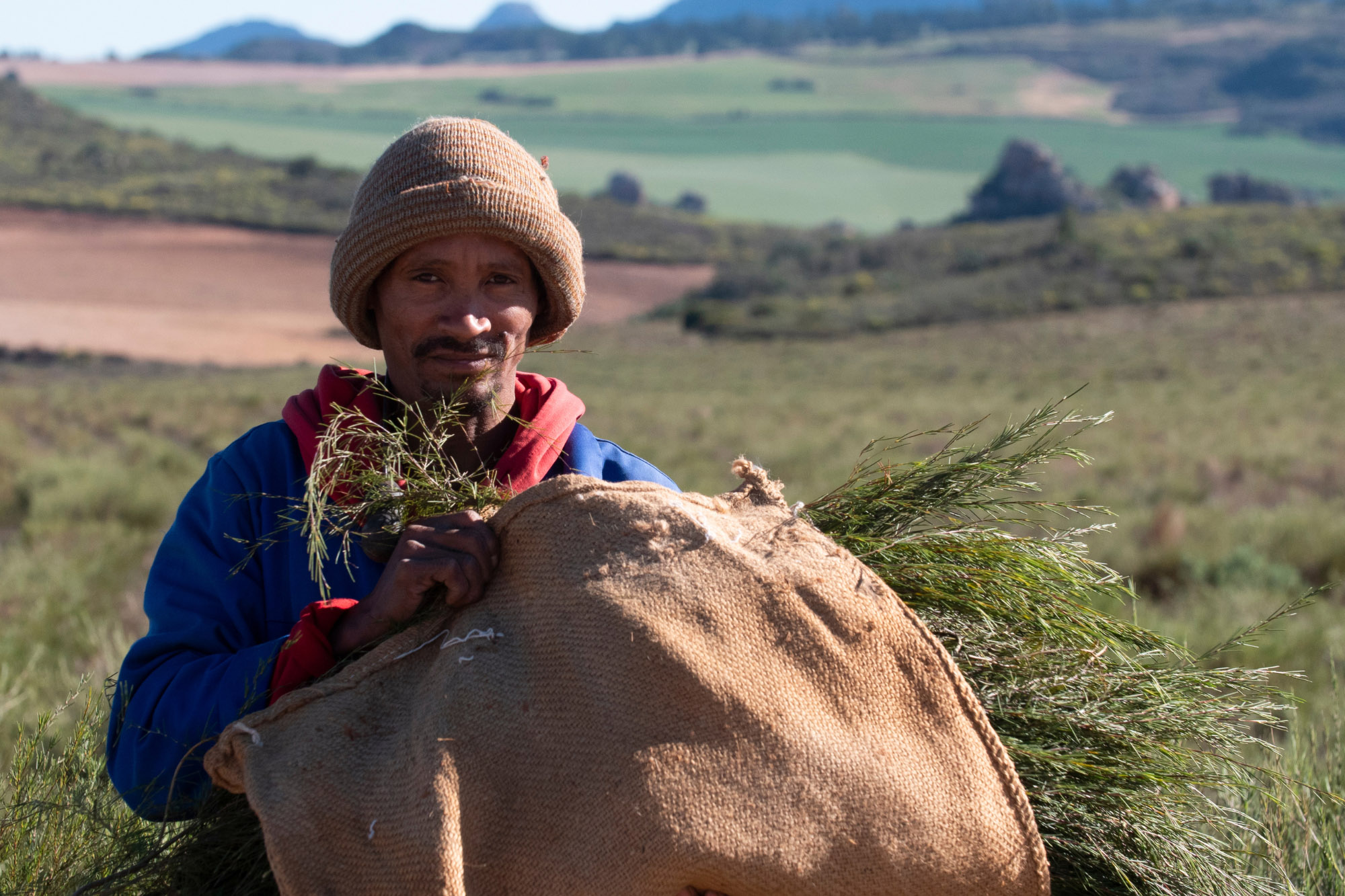
How does rooibos benefit local communities and the South African economy?
Employment and livelihoods
Rooibos isn’t just a beloved beverage – it’s a vital economic engine for the communities in the Cederberg and surrounding regions. The cultivation, processing and sale of rooibos support thousands of jobs, directly impacting farmers, harvesters, factory workers and those involved in tourism. Many of these jobs are located in rural areas where employment opportunities can be limited, making rooibos farming a crucial livelihood for local families.
Cooperative farming and fair trade
Community ownership plays a strong role in the rooibos industry. Cooperative farming models allow small-scale farmers to pool resources, share knowledge and access larger markets. This collective approach strengthens social ties and helps maintain sustainable practices that preserve the fragile fynbos ecosystem.
Export significance
On a national scale, rooibos contributes significantly to South Africa’s export earnings. The country exports rooibos to more than 30 countries, with major markets including Europe, Japan and the United States. The increasing global demand for natural, caffeine-free and antioxidant-rich beverages continues to drive growth in this sector.
Social justice milestone
One of the most groundbreaking aspects of rooibos’s economic impact is the Rooibos Benefit-Sharing Agreement, signed in 2019. This landmark agreement recognises the intellectual property and traditional knowledge of the indigenous Khoisan people, ensuring they receive a fair share of the profits from rooibos commercialisation. It sets an important precedent in South Africa for protecting indigenous rights within commercial industries.
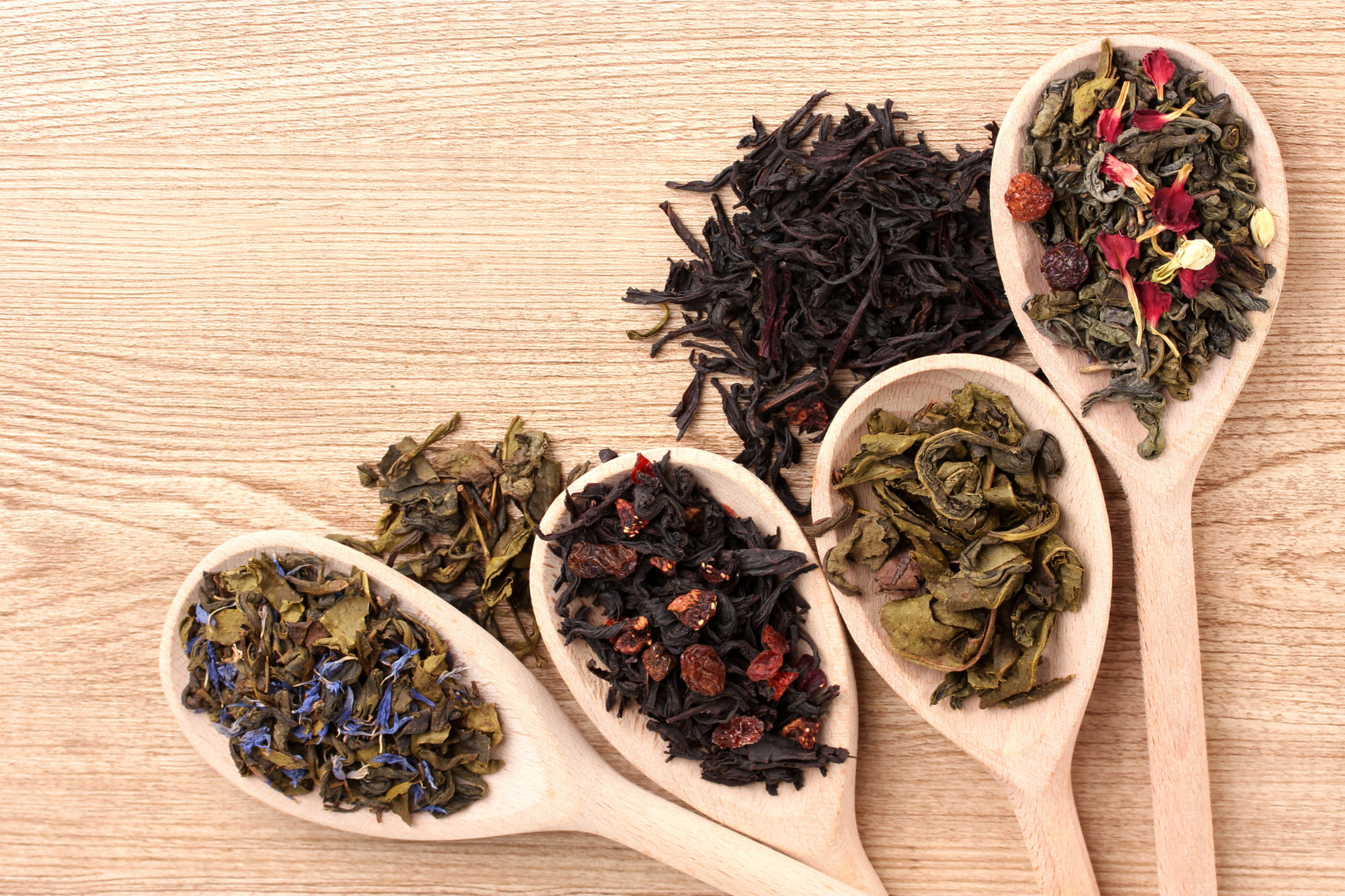
What’s next for rooibos – in farming, tourism and innovation?
Climate adaptation
Climate change is one of the biggest concerns facing rooibos farmers. Shifts in rainfall patterns and rising temperatures threaten the delicate balance of the Cederberg ecosystem, prompting researchers and farmers to develop adaptive strategies such as drought-resistant cultivars and water-wise farming techniques to secure rooibos’s future.
Evolving tourism
Tourism along the Rooibos Route is evolving as well. There’s growing interest in immersive, experiential travel that goes beyond sightseeing to include wellness retreats, culinary tours and interactive workshops. Digital storytelling – through virtual tours, apps and augmented reality – is being explored to engage global audiences and deepen appreciation for rooibos’s heritage and production.
Product diversification
Innovation isn’t limited to tea alone. Rooibos extracts are increasingly being used in cosmetics, health supplements and even craft beverages like rooibos-infused gins and beers. This diversification opens new markets while showcasing the plant’s versatility.

How can visitors plan a trip along the Rooibos Route?
Best time to visit
The ideal time to visit is during the harvest season, typically from late January to early March, when farms are buzzing with activity and the fresh rooibos leaves are being cut and processed. However, the route offers year-round appeal with its scenic drives, hiking trails and farm stays.
Where to stay
Clanwilliam serves as the gateway town and a convenient base, offering accommodation options ranging from rustic guesthouses to boutique lodges. From here, you can easily access key farms, processing plants and cultural sites along well-marked roads.
Itinerary
If you’ve got two or three days, you can really dive into the Rooibos Route at a relaxed pace. Start with a guided farm tour to see how rooibos is grown and processed – it’s a fascinating look behind the scenes of something you probably drink every day without much thought. Then slow things down with a tasting session at one of the tea estates, where you’ll discover just how many flavours rooibos can take on. Between stops, wander through local craft markets for handmade keepsakes or lace up your boots for a hike in the Cederberg mountains, where the landscapes are as much a part of rooibos heritage as the plant itself. And when it’s time to eat, keep an eye out for cafés or restaurants serving rooibos-infused dishes.
Photography courtesy of Simbavati
Share this
Stay in the know
Sign up for the latest hotspot news from Southern Africa.
















